‘Temae-Miso’ ages within the “Kioke”
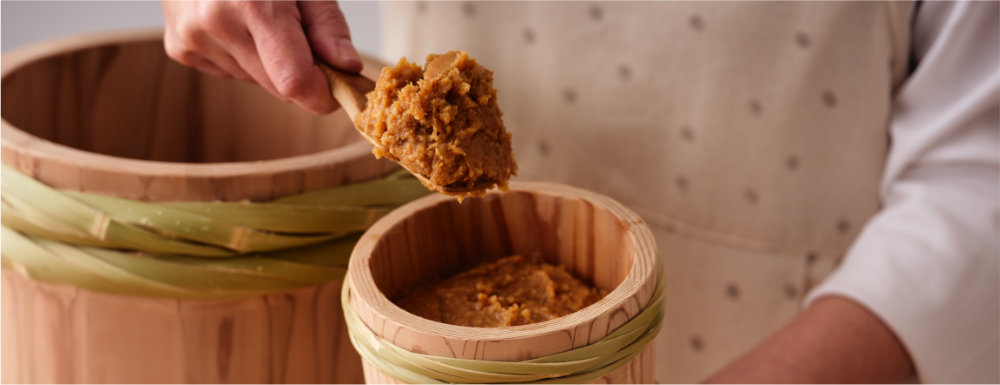
Why we Japanese use the Kioke for Miso making

Author Nancy Singleton Hachisu explains ‘the Kioke is the essential ingredient’. The Kioke – or traditional wooden tub – is not just a ‘container’ but is regarded as a critical ingredient in the world of Japanese fermentation.
Japanese people have understood from ancient times that the Kioke plays an important part in fermenting foods. They relied on this wisdom to produce Miso for family members and spared neither effort nor care in producing this delicious homemade staple. The pride people had in this traditional art led to the expression ‘Temae-Miso’, which means “to sing one’s own praises”.
It is said that the wooden Oke (tub) and Taru (barrel) first became popular during the Muromachi Era (1336- 1573) and that ever since the Kioke has been an essential part of the manufacture of traditional Japanese ferments such as Miso, Shoyu and Sake. There is a special reason for this.
The wood itself can be host to millions of beneficial microbes such as Koji-kin and lactic-acid that are critical to the fermentation process, and the wood retains the microbes, where they thrive and continue to work for Miso or Shoyu making without being washed away. The longer a particular Kioke is used the more its unique biome contributes to the character of the product stored and fermented within it.
A Kioke is a “magic vessel” that fully utilises the properties of the wood to control moisture content and temperature. The internal structure of wood is very porous: made up of long, thin tubular cells to which microorganisms can adhere. These cells also transport moisture to regulate moisture content and temperature, creating a perfect environment for fermentation.
With these excellent powers, microorganisms attached to the Kioke will continue to be active for many years. In this way, the function of the wood combined with the love of the maker create the delicious miso that is so unique in its taste.
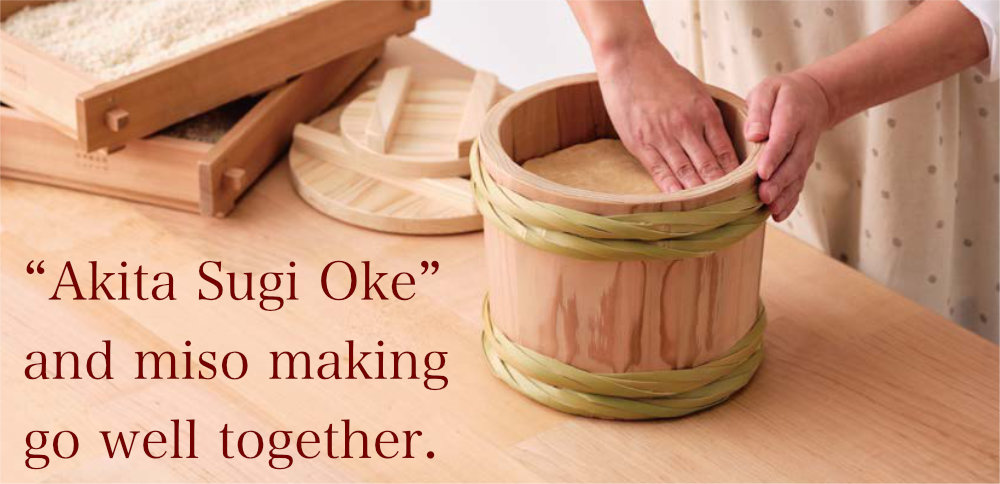
“Akita Sugi Oke” and miso making go well together.
Kutsuzawa Seizaisho’s miso oke and koji buta are made from Sugi felled locally in Akita Prefecture. “Wakan Sansai Zue” (Japan’s first pictorial encyclopaedia), published in the middle of the Edo period, ranked materials used for oke, placing “Sugi” at the very top. There is also mention that if “Sugi moss” (being the planed shavings of Sugi) are thrown into sake it will achieve the same effect as using barrels made of Sugi. You can see that Sugi has been indispensable as a wood used in the manufacture of traditional Japanese fermented foods such as miso, shoyu, and sake. Akita Sugi grows slowly in the cold and snowy environment of Akita Prefecture, and is characterized by its fine grain. The older the tree, the tighter the grain, the more beautiful and stronger it becomes, and the less the wood expands and contracts. It has the perfect characteristics for a tub that is used for a long time and which must remain serviceable. That’s why Akita Sugi tubs are very compatible with miso making.
Akita Sugi Miso Oke
We have relied on more than the input of just miso sommeliers, our product embodies the needs and preferences of all who love making miso in Kioke and its manufacture.
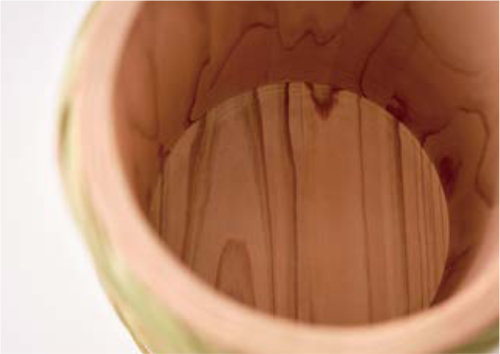
Heartwood is used generously
We select the heartwood, which is rich in antibacterial properties and highly durable, and assemble it without using chemical adhesives with back sawn material suitable for brewing. The sides are of a generous thickness to maintain watertightness for long periods of time, making the tub suitable for miso making.
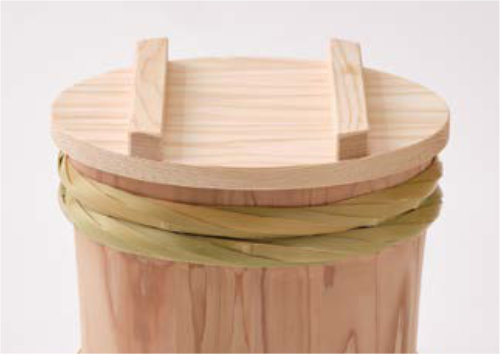
Carefully selected bamboo is woven and tightened
The bamboo hoops are woven using traditional techniques, and more hoops are used than in normal tubs to make ours sturdy. In particular, the hoop on the top is tightened at a position close to the mouth so that the opening does not spread.
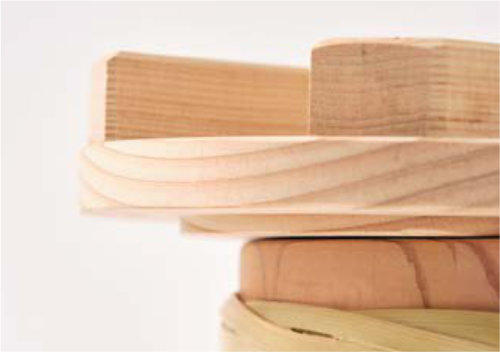
The upper lid has a rebate so that it does not shift.
The upper lid has a rebate to keep it in place.

The inner lid is sized to match the inside diameter for each sized tub.
The inner lid is sized to fit within the inside diameter so that the miso does not come in contact with the air.
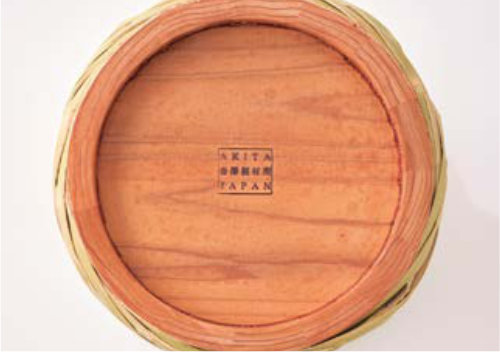
Three coats of Kakishibu are applied to the bottom to increase rot resistance.
The bottom plate is treated with three coats of Kakishibu, a traditional wood treatment derived from persimmon tannin, and which increases its resistance to decay.